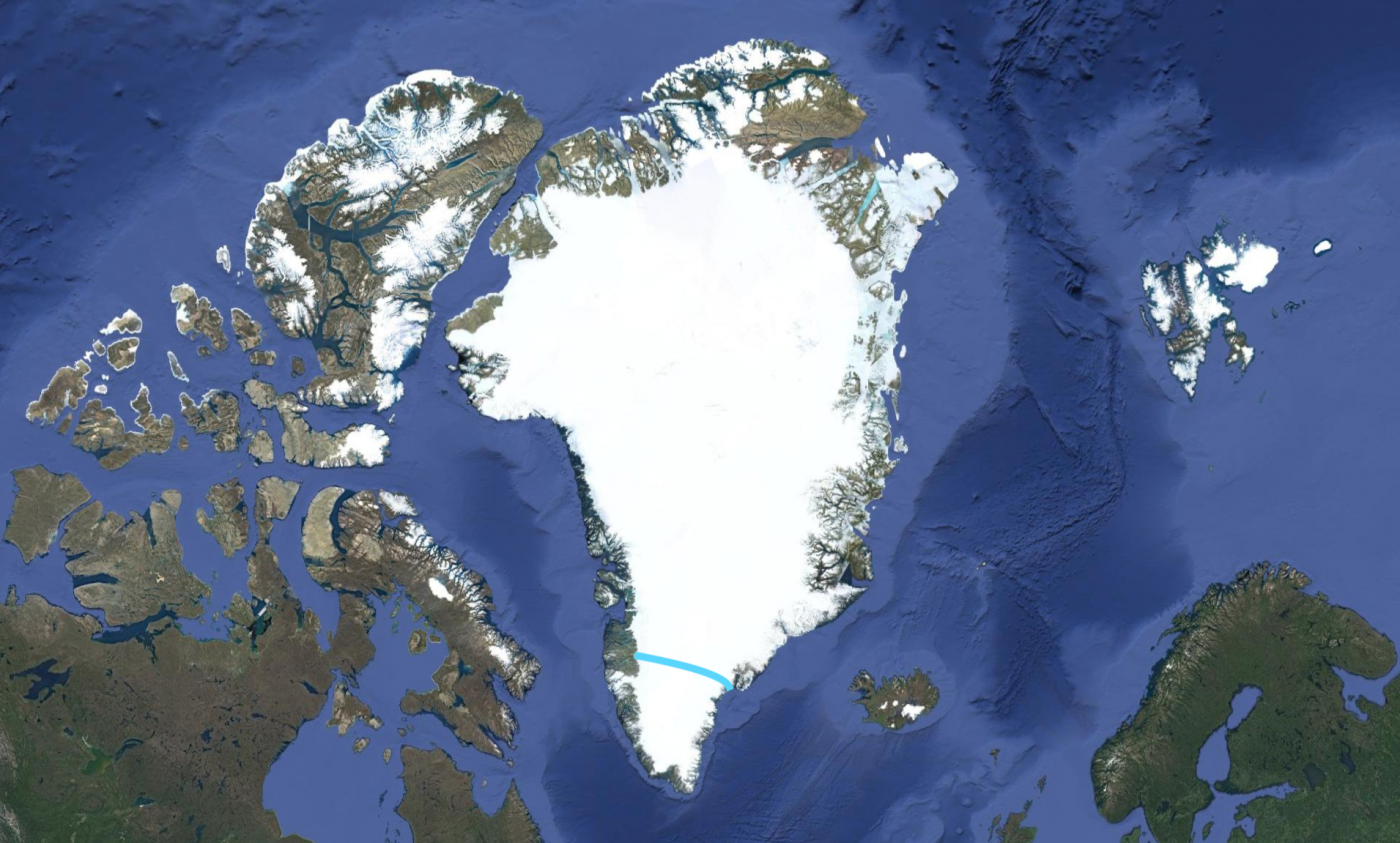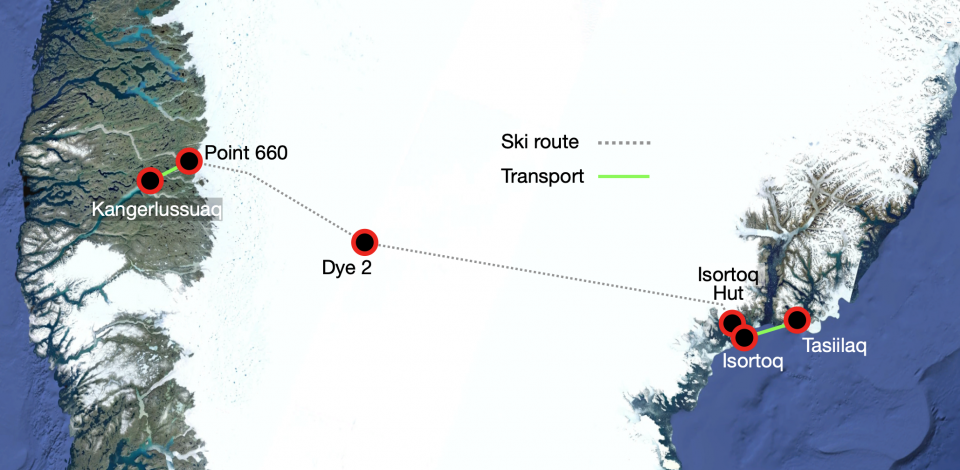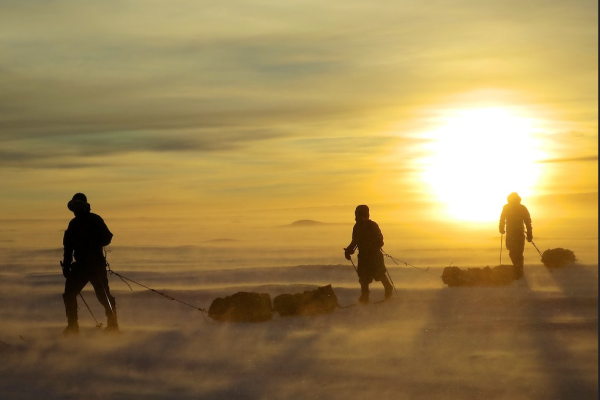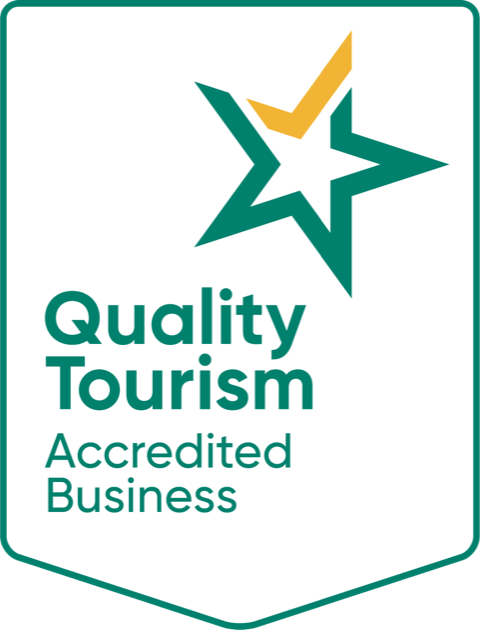A major milestone in your polar career
- Gateway Kangerlussuaq, Greenland
- Distance 540km
- Days on Ice 23-26
- Daily Distance 20km
- Temp. Range -5 to -25°C
- Sled Weight 70kg
- Challenge 5 What's this?
- Conditions Altitude, cold, wind,
- Challenges Altitude, cold management, sled hauling, icefalls
Trip Itinerary
Morning flight from Copenhagen to Kangerlussuaq. Packing, preparation and purchasing final supplies. Welcome dinner at a local restaurant
Drive to 'Point 660', our start point at the edge of the ice sheet.
Depending on conditions, we walk with crampons or ski up the icefall.
Ski across the plateau towards DYE 2.
Take a rest day at DYE 2 to recharge, explore and check over our equipment.
Continue across the plateau to reach the high point of our Greenland crossing.
Begin our descent down the icefall to the fjord.
Ski across the sea ice to the outer edge where we are collected by boat and transferred to Isortoq. Stay in the ‘Service House’ and visit the souvenir store.
Fly by helicopter to Tasiilaq. End of services.
Inclusions
- Transport from Kangerlussuaq to Point 660
- Food and stove fuel while on the ice
- Minimum 2 x Icetrek guides, ratio 1 guide per 4 participants
- Use of technical equipment including sleds, tents, cooking equipment. This equipment is returned after the trip (see equipment list)
- Safety/navigation/communications equipment
- Mandatory search and rescue insurance
- Boat ride from ice edge to Isortoq
- 20% discount on selected Icetrek Equipment
Exclusions
- Travel to Kangerlussuaq
- Accommodation and meals in Kangerlussuaq
- Helicopter from Isortoq to Tasiilaq (pay the pilot when we fly)
- Accommodation and meals in Tasiilaq
- Helicopter from Tasiilaq to Kulusuk
- Travel out of Kulusuk (either to Iceland or back to Kangerlussuaq)
- Additional costs (accommodation, meals etc.) due to changes beyond our control ie. weather delays
- Evacuation, hospitalization and repatriation costs and/or insurance (we can advise)
- Personal clothing and footwear
After catching a morning flight from Copenhagen to Kangerlussuaq (a small town on the west coast of Greenland), the rest of the day is used for packing, preparation and purchasing final supplies. In the evening we will dine at a local restaurant to celebrate the beginning of our expedition.
After a few last minute preparations (like putting clean clothes in the mail to be collected on the other side) we drive to 'Point 660' at the foot of the icecap. Here we set up camp, or if time allows, get a few kilometres under our belt.
The first couple of days can vary year to year depending on conditions. We may be faced with a bare and exposed ice field, meaning putting crampons on, and navigating difficult terrain to reach the snow. Or, if snow has already built up at the start point, we can put skis on straight away and make good distance in these first few days.
As we break out of the lower part of the icefall, the landscape transforms into undulating hills, which we ascend over a few days to the top of the icefall. After leaving the icefall we head easterly aiming for DYE II (an abandoned radar station from the Cold War). Slowly the landscape flattens out and we find ourselves on the plateau.
Depending on visibility, DYE II will appear on the horizon some 25-27km away. Upon reaching DYE II, we take a rest day to recharge, explore the historical relic and check over our equipment. As we leave DYE II we move into the flattest part of the expedition. We cover large distances over this terrain, and finally reach our high point.
From this point, we are on the home stretch, feeling the wind on our backs. As we break into the icefall and begin our descent, mountains and ocean will slowly come into view. Navigating the moraines, we eventually find ourselves down by the fjord, back at sea level.
After following the sea-ice out of the fjord, we wait at the ice edge for an Inuit to collect us by boat and soon arrive in the tiny hunting and fishing village of Isortoq. Here we stay in the ‘Service House’ and visit the souvenir store.
The next day we fly by helicopter to Tasiilaq, a picturesque town and the ‘capital’ of the east coast. Here we collect our clean clothes from the mail, have a shower, and enjoy the delights of civilisation (food!).
From Tasiilaq our services end and you can decide to stay in the beautiful Tasiilaq for a day or two or continue out to Kulusuk and then either to Iceland or back to the west coast.
First thing we do is light the stove to bring some warmth to the tent and begin heating water for breakfast and drinks. We also make sure that our thermoses are topped up with boiling water. A quick look outside reveals a perfect day, a disk of white below and a dome of blue above.
We are ready to go with pulks packed, skis on and an endless white plain ahead of us. We travel in single file, the team following in the tracks to conserve energy. And if you want to lead the group for a while we fully encourage it, in safe and uncomplicated terrain. It feels wonderful to have an unhindered view ahead, scanning the horizon for the first glimpse of the abandoned early warning station, Dye 2.
And then someone calls out, 'there's something on the horizon' and a debate ensues - is it Dye 2 or just a strong imagination? Ten minutes later it is unmistakable, Dye 2 takes shape, it's white radar dome glistening in the sunlight. The excitement is palpable and the pace picks up slightly, but there's no rush, it will take the rest of the day to reach it.
We continue eastward, slowly gaining altitude but we won't reach our high point on the ice divide for another few days. A quick break to drink from our thermoses and eat from our snack bags gives us momentary rest before we find our stride once again and lock into the polar plod, listening to the glide of our sleds, the swish of our skis and the rhythm of our hearts. Everything is in sync.
After lunch our objective is in clear view but distant clouds herald a change in fortune, we may be in for a blustery night. At 5pm we arrive at the station and it dwarfs our little team. It is an alien experience to see this strange shape, this relic from the Cold War era, perched on the snow, slowly being buried by each passing blizzard.
We quickly set up camp as clouds roll overhead, and, as we do every night, we prepare for strong wind. Thankfully, tomorrow is a scheduled rest day and a new forecast received on the sat phone is for the weather to clear by lunch giving us time to explore the mysterious bowels of Dye 2.
Inside our tents we light the stove and eat our remaining snacks as we wait for hot water to make a welcoming cup of soup. There's no shortage of excitement buzzing around the camp but a long day of sled hauling, full bellies and the prospects of a day of rest send us into a deep sleep, the kind you only get after such days on the ice.
Flights
There are multiple airlines flying to Copenhagen, Denmark and then Air Greenland to Kangerlussuaq on the west coast of Greenland. We will advise you on the best flight options.
Once you have signed onto the trip you will receive a Greenland Crossing Information Booklet which has full details of how to plan for your trip.
What will be the temperature on arrival in Kangerlussuaq and during the trip?
The temperature will be anywhere from -5º to -30ºC, 23º to -22ºF
*
Where do we meet in Kangerlussuaq?
You will be informed where to meet based on your hotel and arrival time date. We recommend accommodation at Old Camp (you will find it online). We may also meet earlier in Copenhagen, depends on your schedule.
*
Can I leave bags in Kangerlussuaq?
Only if you decide return to Kangerlussuaq after the trip, as we don't return to Kangerlussuaq. This can be arranged with your hotel. Otherwise we post anything we don't take on the crossing to Tasiilaq on the other side.
*
How heavy will my sled be?
Approx 70kg, 155 lb.
*
What if I am not a skier?
You will need to spend some time learning how to use cross country skis. It is not difficult but a good technique preserves energy and makes for a more rewarding trip. Get some roller skis, take a course, join a pre-expedition training program in Norway.
*
What is the Guide to Client ratio?
1:6
*
Will there be any crevassing?
Greenland is a glaciated ice sheet and we negotiate some crevasses on the west and east flanks. Our guides are trained and skilled in glacier travel.
*
What type of sleds do we use?
We use lightweight pulks, 2 per person towed in a line. Spread across the pulks you secure your polar bedding containing sleeping gear and some other items.
*
What type of tents do we use?
We use high quality Scandinavian tents, 4-person tents for two people. There is plenty of room to get comfortable but small enough to warm up quickly once the stove is operating. You are responsible for setting up, managing and taking down your tent.
*
What type of sleeping bag should I use?
A -30C down sleeping bag should be adequate, even warmer if you sleep a bit cold.
*
What will we eat on the expedition?
You can find our menu here
*
Who cooks the meals and melts the snow for water?
You do! This is a normal part of expedition life. We train you in how to use the stove.
*
What if there is an emergency and how will we communicate with the outside world?
We carry Iridium handheld satellite phones and stay in touch daily with our base in Oslo. We also carry a Personal Locator Beacons which can be activated in an emergency.
*
How long do we ski every day on the Greenland crossing?
The start through the icefall forces us to move slowly and steadily, it is difficult to make a lot of distance during these early days. But once we reach the plateau we start to build up our distance to around 25km per day across 7-8 hours of hauling.
*
Feel free to submit your own questions.
Although experts in mitigating risk, we can never guarantee that things will work out as planned. As such, being covered for the cost of medical-related expenses is recommended, and mandatory on some trips.
We recommend you are covered for medical, repatriation and medical evacuation expenses. In Antarctica you must have medical evacuation cover to the value of US$150,000 and $350,000 if visiting South Pole.
It is important to make the distinction between Medical Evacuation and Search and Rescue.
Here are some providers that may be useful. Keep in mind these criteria which may pertain to your trip - nationality, age, geographic location, risk activities, residency,
Global Rescue
World Trips
IM Global
Travel Guard
World Nomads
RipCord





